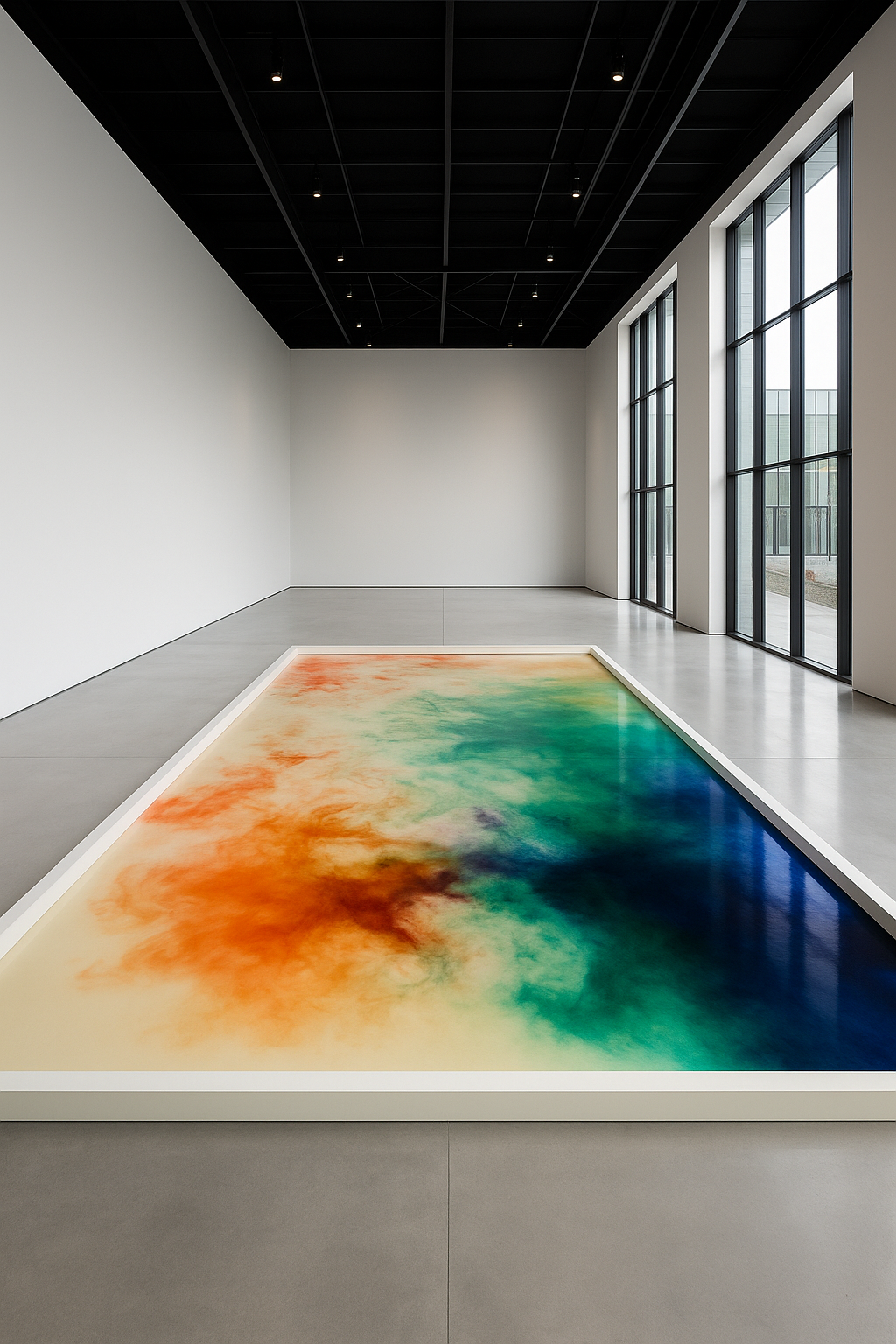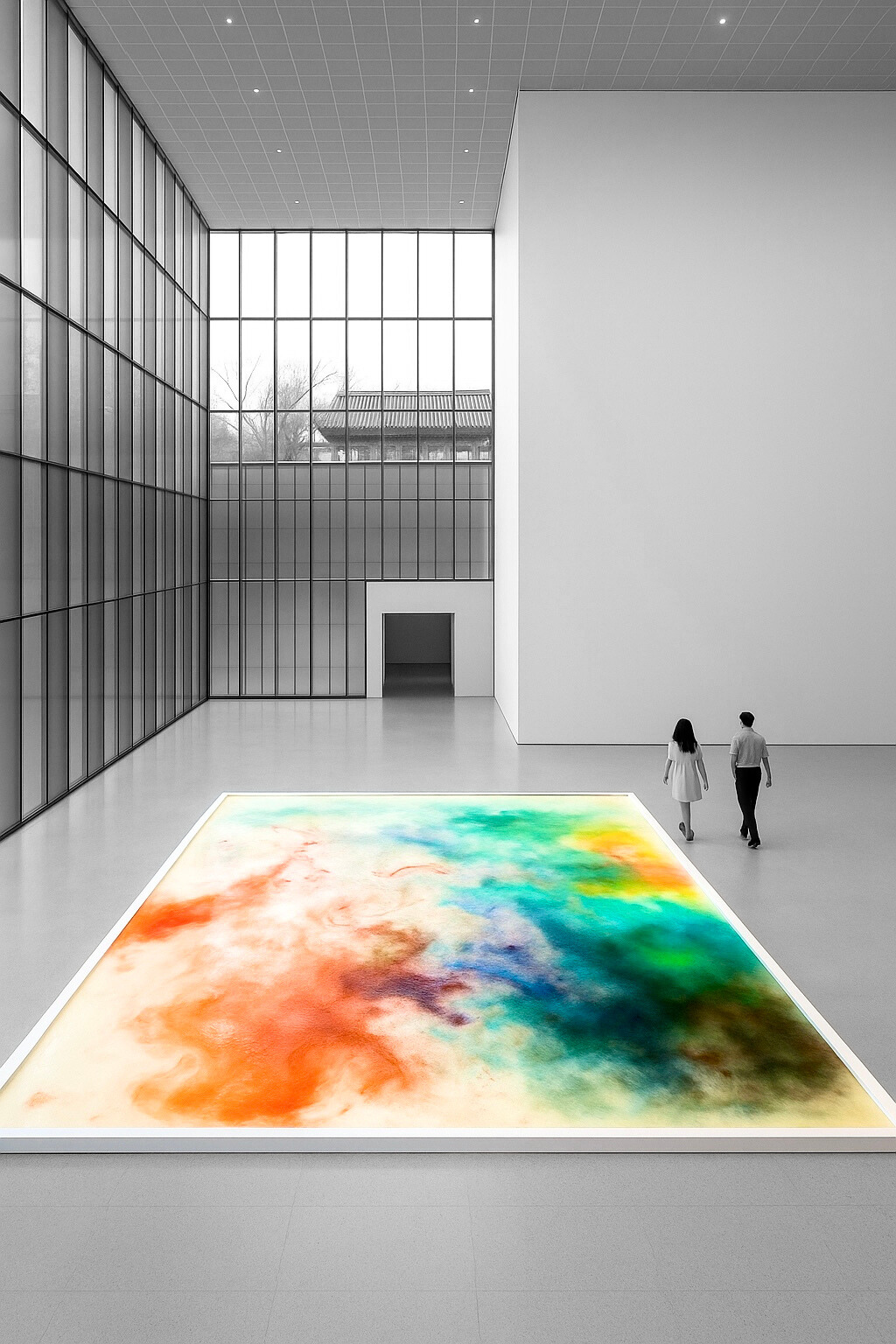
Starch Motion was born from a desire to bring body, viscosity, colour, and movement into dialogue within a space of slow transformation.
Created in 2025 at the Musée Unterlinden in Colmar, this performative project draws inspiration from the paintings of Olivier Debré and the silent strength of suspended materials. Between choreography, performance, sound installation, and living painting, this project explores a zone of uncertainty — where movement becomes an abstract trace, a lyrical landscape.
Starch Motion belongs to a lineage of undisciplined works, at the crossroads of the performative and the pictorial. Rather than freezing the image, the project reveals its birth, then its slow erasure.
The installation that remains after the performance extends the gesture through time. The material lives autonomously: it reacts, gradually solidifies, dries over the days, and sometimes cracks. A transitional work — at once fragile, alive, and ephemeral — Starch Motion is never repeated: even when presented twice in an identical context, the performance, and the resulting installation, will always be different.
STARCH MOTION - 2025
STARCH MOTION

Création 2025 - Performance and Installation for the Musée Unterlinden in Colmar - France
Choreography, scenography and concept - Mathis Nour
Musical composition - Hong Ehwa
Artistic collaborator, perfromer - Leonora Nummi
Technical support - Jerome Neff, Jerome Duvauchelle, the technical team of the Opéra National du Rhin.
Coordination - Claire Hirner, Pasquale Nocera
Conservation and curating - Camille Brouckre, Raphael Mariani
Co-production : Opéra national du Rhin, Musée Unterlinden
Avec le soutien de la Maison de la Musique Contemporaine
At the heart of the setup is a square basin filled with a mixture of cornstarch, water, and natural pigments. The dancer moves within it, standing, in a choreography that merges with the viscous fluid.
The musical composition by Korean composer HONG Ehwa is broadcast live, through a four-sided sound system, in interaction with the movement.
At the end of the performance, the installation remains visible for five to six days. Time, humidity, and gravity complete the composition, revealing abstract landscapes with shifting contours. The work thus unfolds in two moments: that of action, and that of imprint.

DOCUMENTARY

Simulations for other venues :



Viscosity, in physics, measures the resistance a material offers to flow. The more viscous a substance, the more it slows, hinders, and holds back. But beyond fluid mechanics, viscosity becomes a powerful metaphor: it describes the way an idea, a culture, or a person reacts to — or resists — change. It is what sticks, what slows down, what holds together
In sociology, Zygmunt Bauman described our era as a “liquid modernity”: everything changes fast, nothing lasts. In this fluid world, viscosity emerges as a countercultural value: it embodies thickness, slowness, and memory. It anchors what speed erases.
In psychology, Freud saw in “resistance” a form of psychic viscosity: something that prevents us from moving forward, yet also protects us. Habits, traumas, social norms — all of these create an inner density, sometimes heavy, sometimes protective.
In today’s context, where everything is accelerating — technology, ecological crises, social transformations — viscosity reminds us that slowness, resistance, and complexity are integral to being human. It invites us to value depth over the obsession with performance, to acknowledge our limits, and to embrace denser, more embodied rhythms.
In Starch Motion, viscosity is tangible. It is both matter and metaphor. It slows the gesture, alters its trajectory, and compels the body to listen to the resistance of the ground. It becomes a space of negotiation between movement and what resists it. And perhaps this is where its power lies: in its ability to transform constraint into form, and slowness into living memory.







